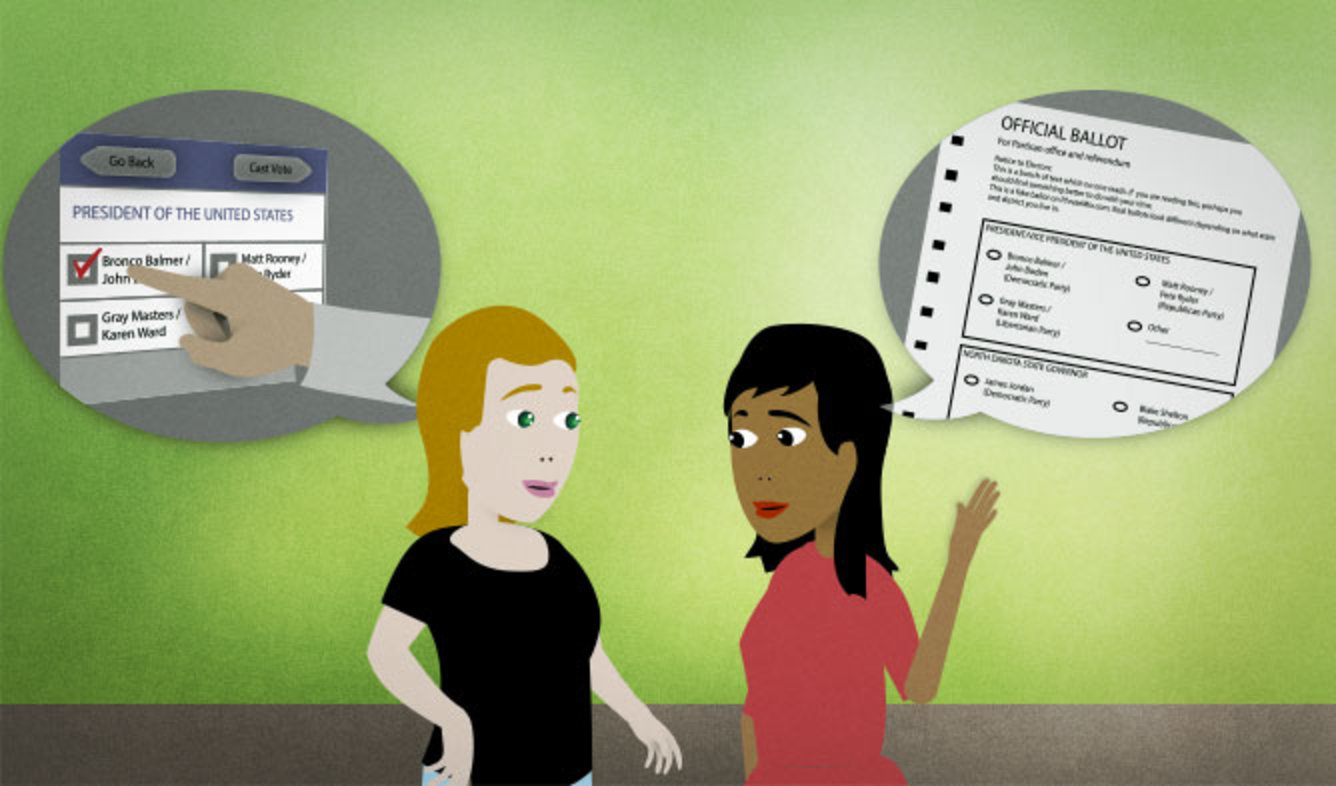“They still use printed ballots in my district.”
There was an election recently. You're talking with a friend about voting. She says that she had to use a computerized voting machine. You didn't, so you say this.
They still use printed ballots in my district.
Want Video and Sound? Follow us on YouTube

they
People often use "they" to mean the people who are responsible for something. For example:
They should clean up the sidewalks here.
In this example, you don't know or care who exactly is supposed to do this; you just think that the people or department which takes care of the sidewalks should do it.
"They" can mean:
- the government
- the police
- the people who manage a building
- the people who run large companies
In other cases, when you use the word "they", you have to explain who you're talking about first. Imagine that someone says:
They came to the beach house.
If you didn't know who the speaker was talking about, you would ask:
Who did?
But when "they" means "the people in charge", you don't need to explain who you mean.
printed ballots
A "ballot" is a form that people use for voting. Ballots include the names of each of the candidates in an election. Voters fill out the ballot to cast their vote.
Traditionally, all ballots were printed on pieces of paper. In recent years, "electronic ballots" on voting machines have been developed. So the term "printed ballot" now describes a traditional ballot made of paper.
a (voting) district
Governments divide areas in different ways: into provinces, states, counties, towns, etc. One small area is called a "district".
There are different kinds of districts. There are "police districts" which are each served by a different police department, "fire districts" which each have their own fire station, and "voting districts" which determine what local elections residents will vote in.
Voting districts are usually numbered (like "District 19", "District 41", etc.). Other kinds of districts can be numbered or named for their location ("Wellington Falls Fire District").
